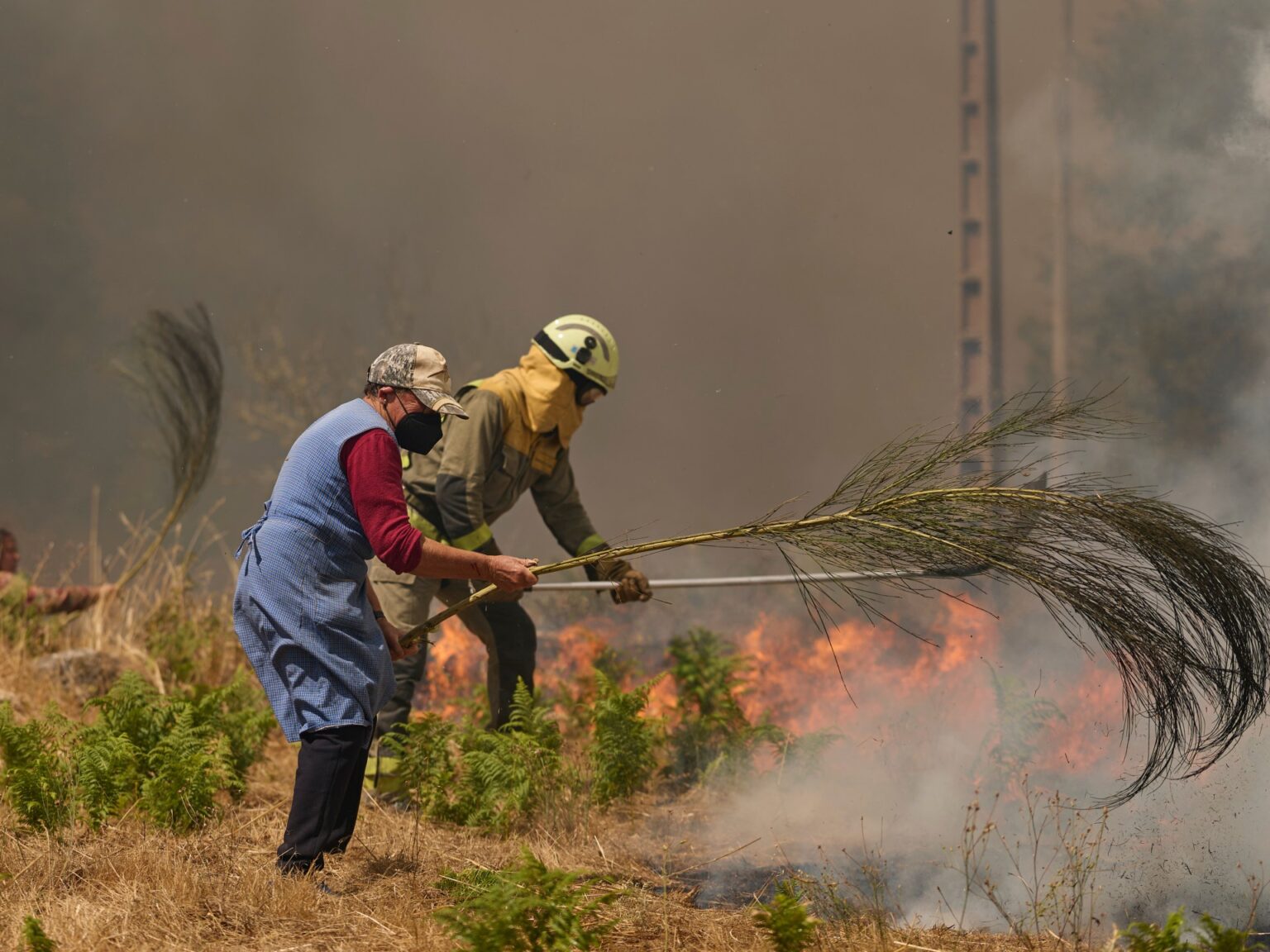Spain is tackling several major wildfires in one of its most destructive fire seasons in decades, fuelled by climate change, as the end of a severe 16-day heatwave and expected rainfall raised hopes that an end may be in sight.
Thousands of firefighters aided by soldiers and water-bombing aircraft continued on Tuesday to fight fires tearing through parched woodland that were especially severe in northwestern Spain, where the country’s weather agency AEMET reported a still “very high or extreme” fire risk — particularly in the Galicia region.
Authorities have suspended rail services and cut access to roads in the regions of Extremadura, Galicia, and Castile and Leon.
Firefighting units from Germany arrived in northern Spain on Tuesday to help fight the blazes, Spain’s Ministry of the Interior announced. More than 20 vehicles were deployed to help fight an ongoing blaze in Jarilla in the Extremadura region that borders Portugal, the ministry said.
Visiting the fires in Extremadura, Prime Minister Pedro Sanchez said the government would declare many of the affected areas as emergency zones, which in practice means they will be eligible to receive aid for reconstruction.
Blaming the fires on the effects of climate change, he also said he would propose a plan next month to turn climate emergency policies into permanent state policies.
“We’re seeing the climate emergency accelerate and worsen significantly, particularly in the Iberian Peninsula, each year,” he said.
Opposition leaders have said his proposal is a way to divert attention from his government’s poor handling of the fires.
AEMET, which on Monday declared the end of one of the longest heatwaves in the past five decades, now expects temperatures to fall and humidity to rise. However, it said that adverse conditions would remain in southern Spain, including in part of Extremadura.
The fires in Spain have killed four people this year and burned more than 382,000 hectares (944,000 acres) or about 3,820 square kiolometres (1,475sq miles), according to the European Union’s European Forest Fire Information System (EFFIS).
Many fires have been triggered by human activity. Police have detained 23 people for suspected arson and are investigating 89 more, Spain’s Civil Guard said.
The Spanish army has deployed 3,400 troops and 50 aircraft to help firefighters, while the Czech Republic, Finland, France, Germany, the Netherlands and Slovakia have sent hundreds of firefighters, vehicles and aircraft.
Along the Iberian Peninsula in Portugal, more than 3,700 firefighters were tackling blazes, including four major ones in the north and centre.
Wildfires there have burned about 235,000 hectares or 907 square miles, according to EFFIS — nearly five times more than the 2006-2024 average for this period. Two people there have died.
“The devastation [from the wildfires] is enormous, it looks like an apocalyptic landscape,” said Al Jazeera’s Sonia Gallego, reporting from Coutada, Portugal.
“What is of immense concern to the firefighters is not just putting out the flames, which have gone out of control … but also the danger of reignition,” said Gallego.
Another challenge facing firefighters, she noted, is accessing “a source of water which is close enough where they can collect water and extinguish those flames.”
Most of Southern Europe is experiencing one of its worst wildfire seasons in two decades.
Europe has been warming twice as fast as the global average since the 1980s, according to the EU’s Copernicus Climate Change Service. Scientists say that climate change is exacerbating the frequency and intensity of heat and dryness in parts of Europe, making the region more vulnerable to wildfires.
https://www.aljazeera.com/news/2025/8/19/spain-battles-major-fires-even-as-heatwave-eases-with-lower-temperatures?traffic_source=rss


